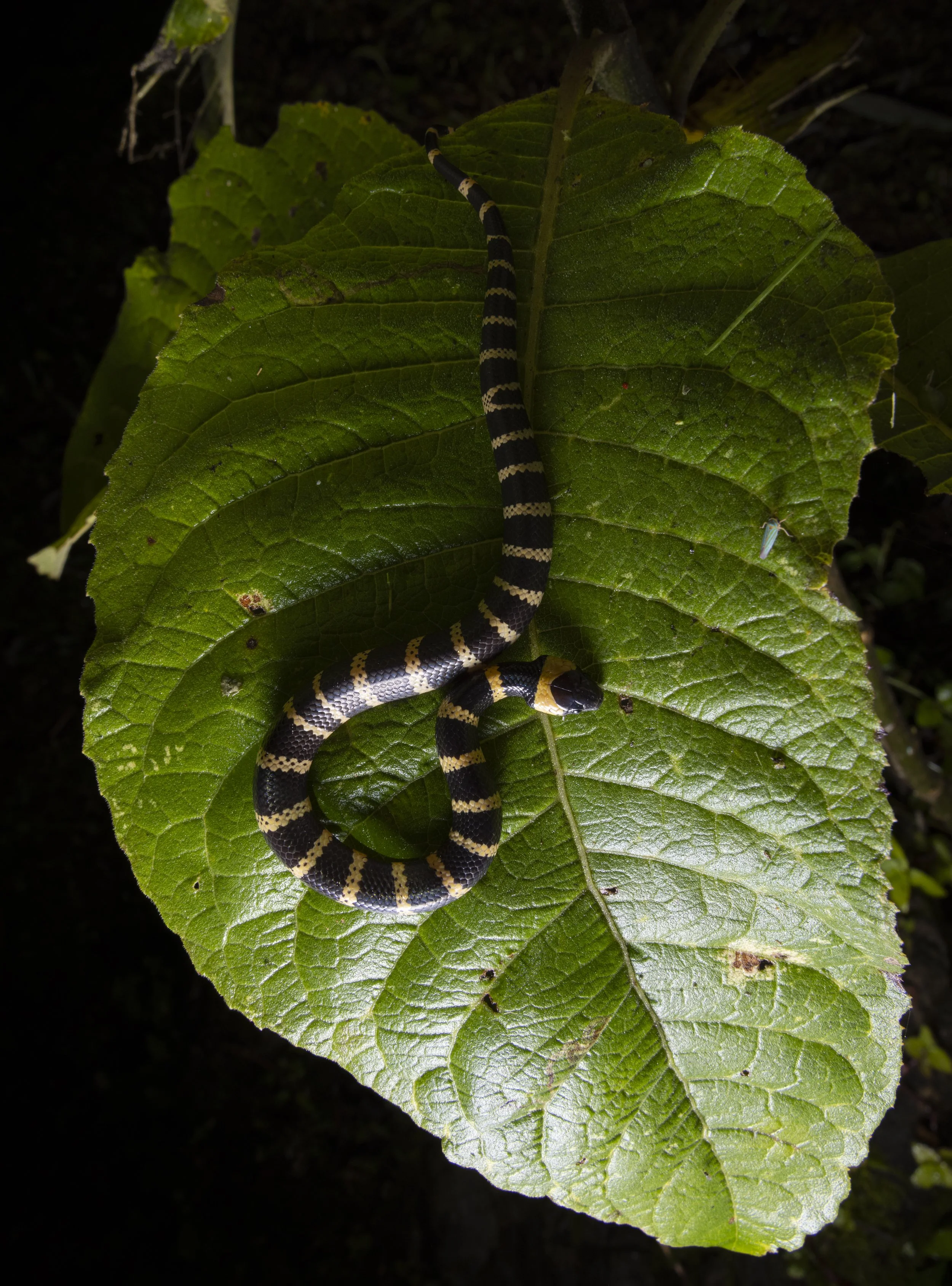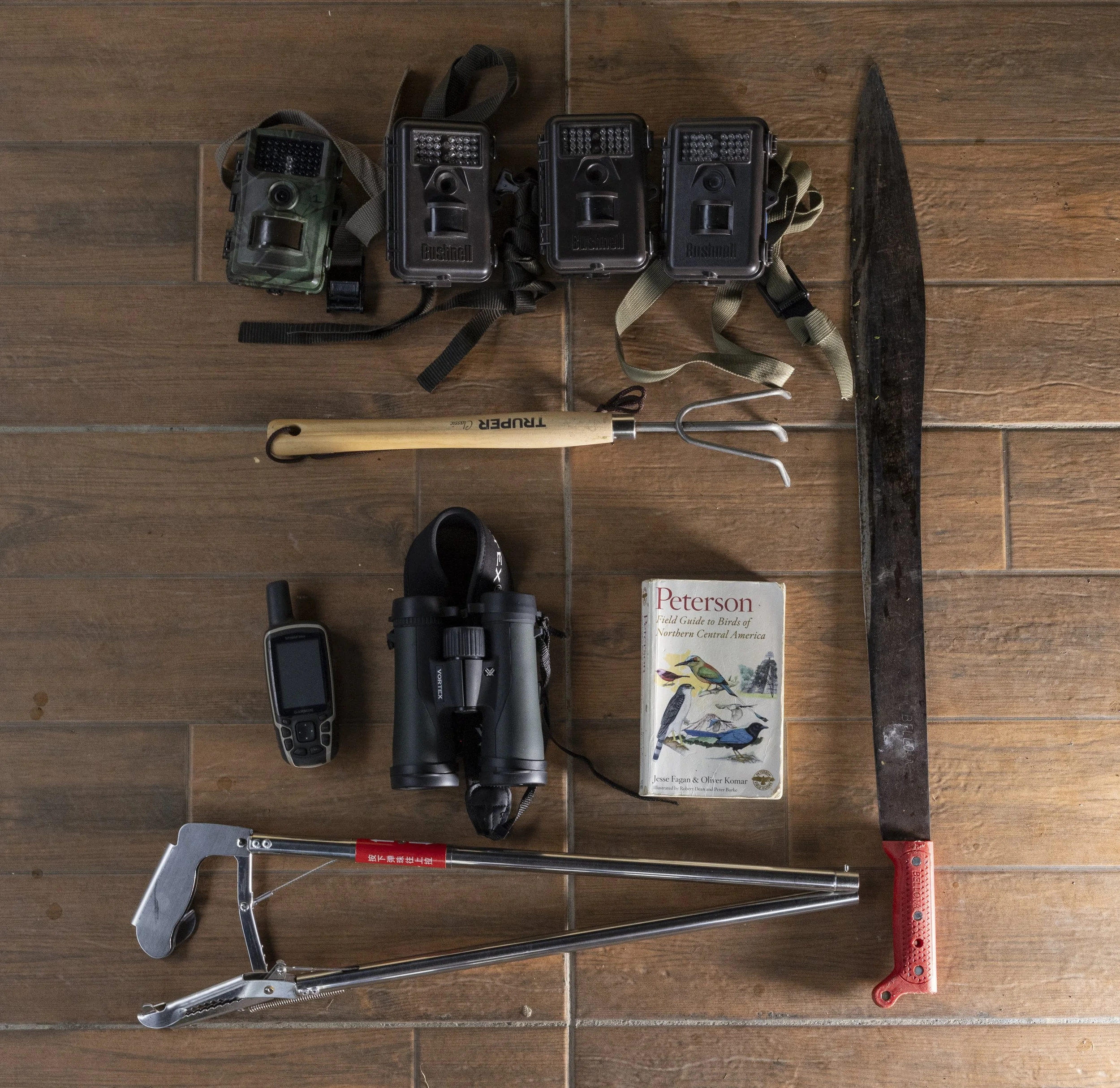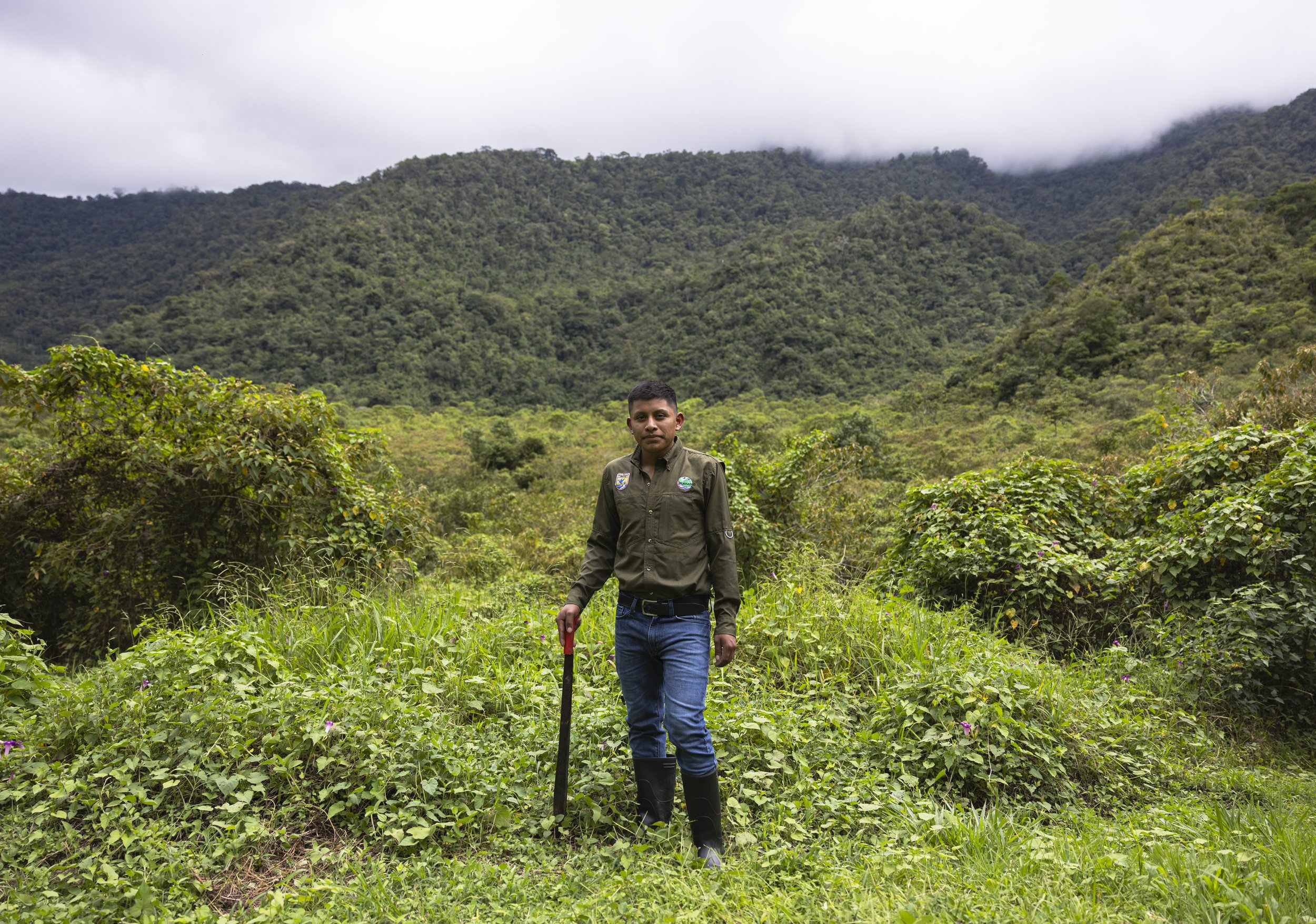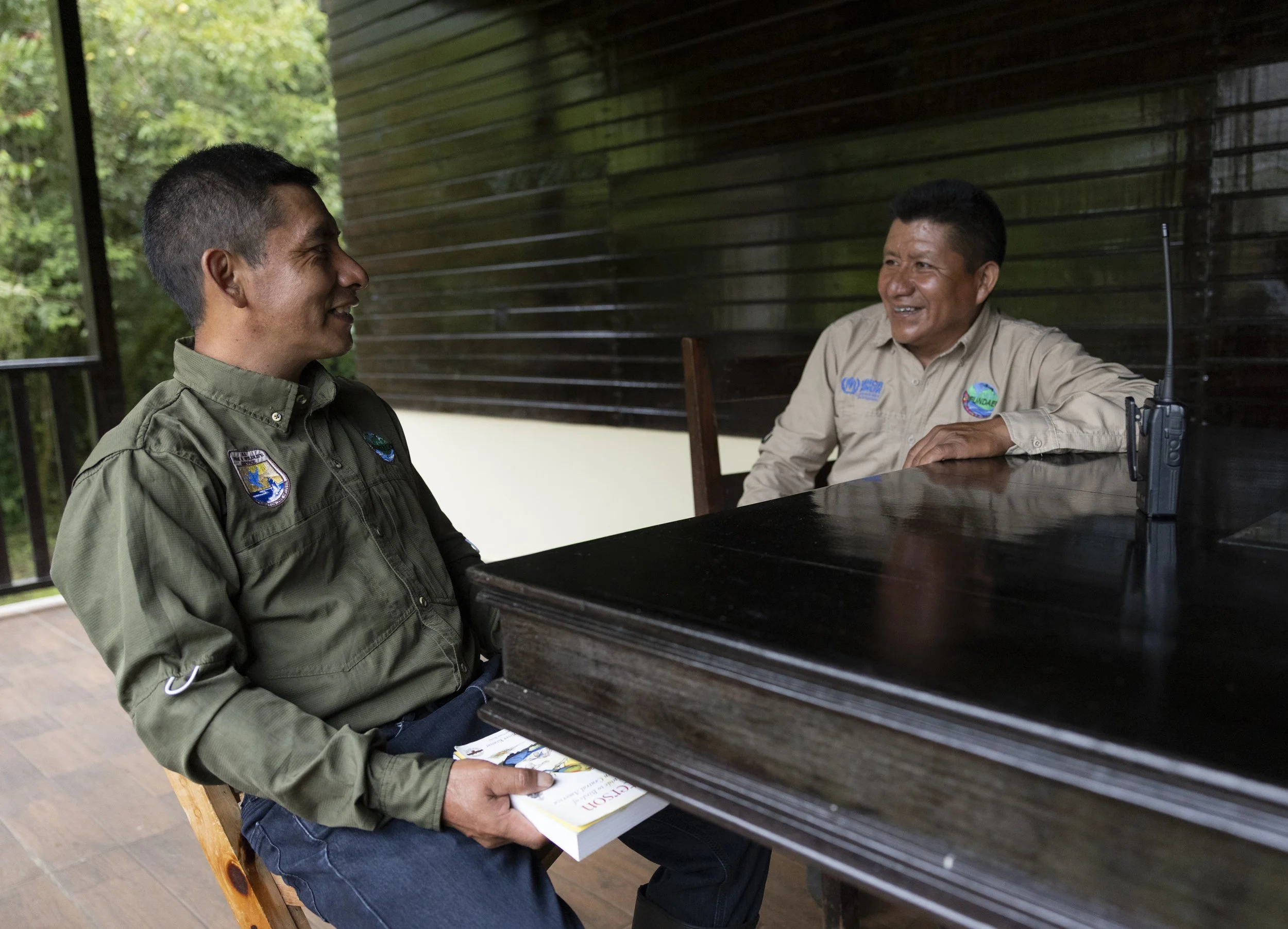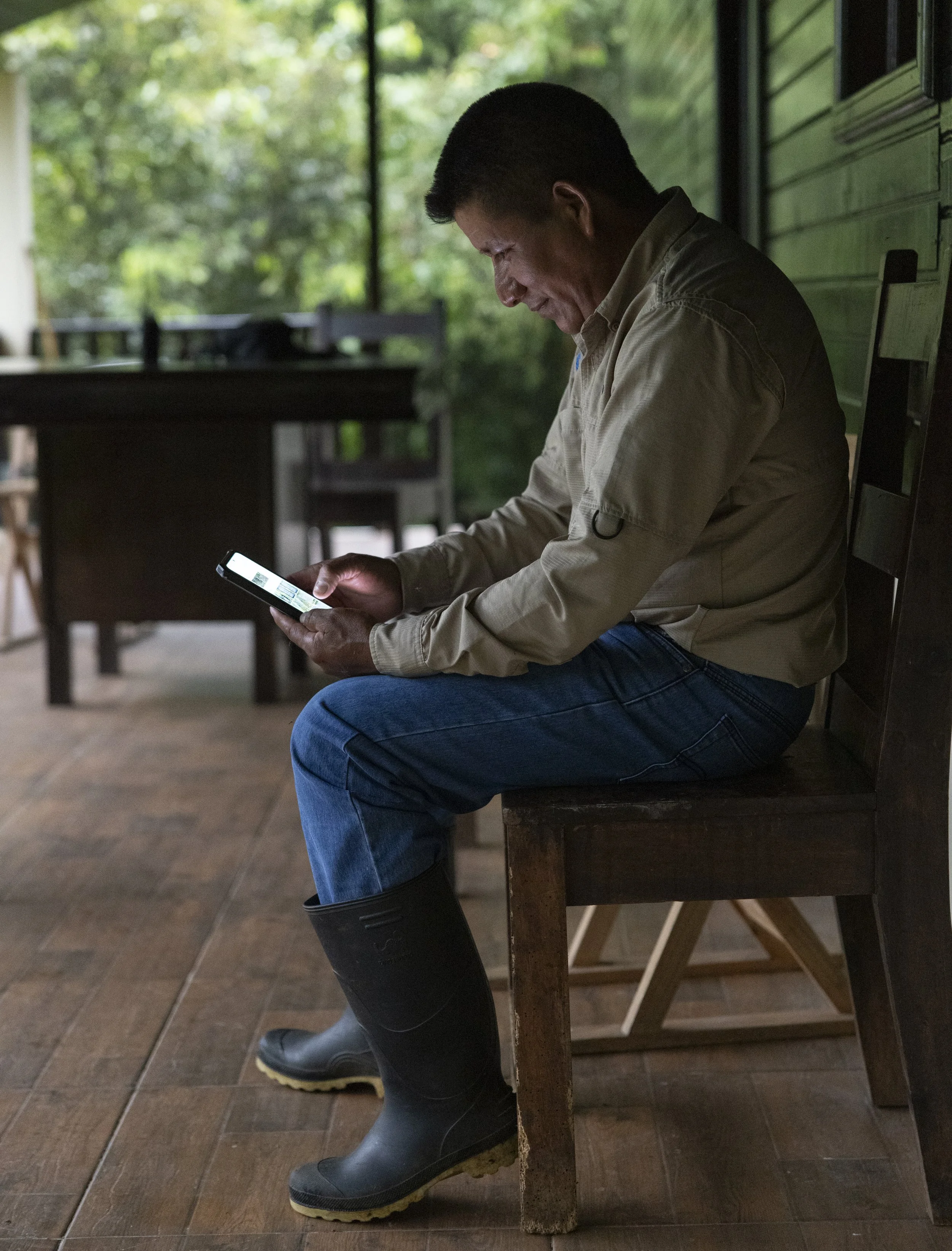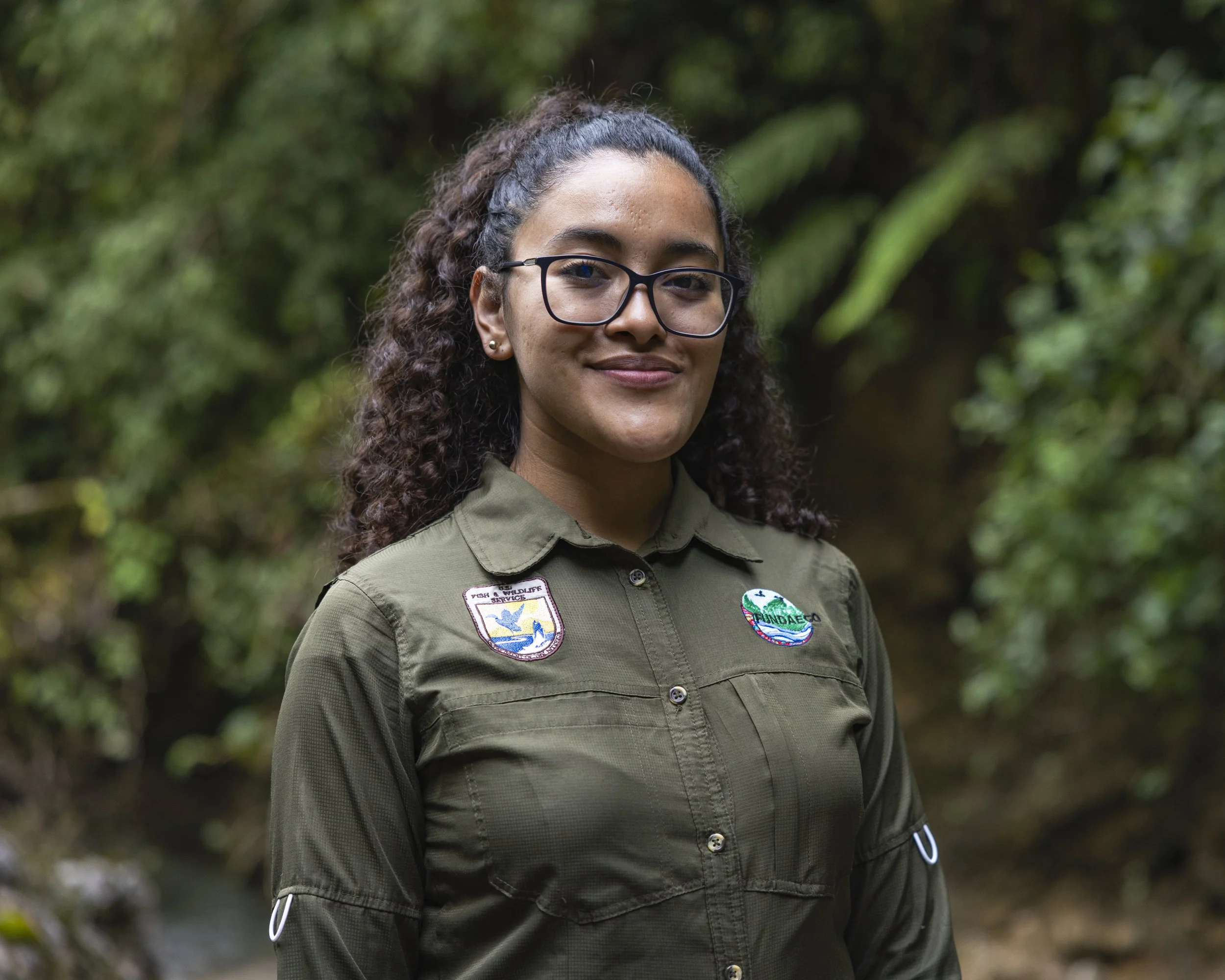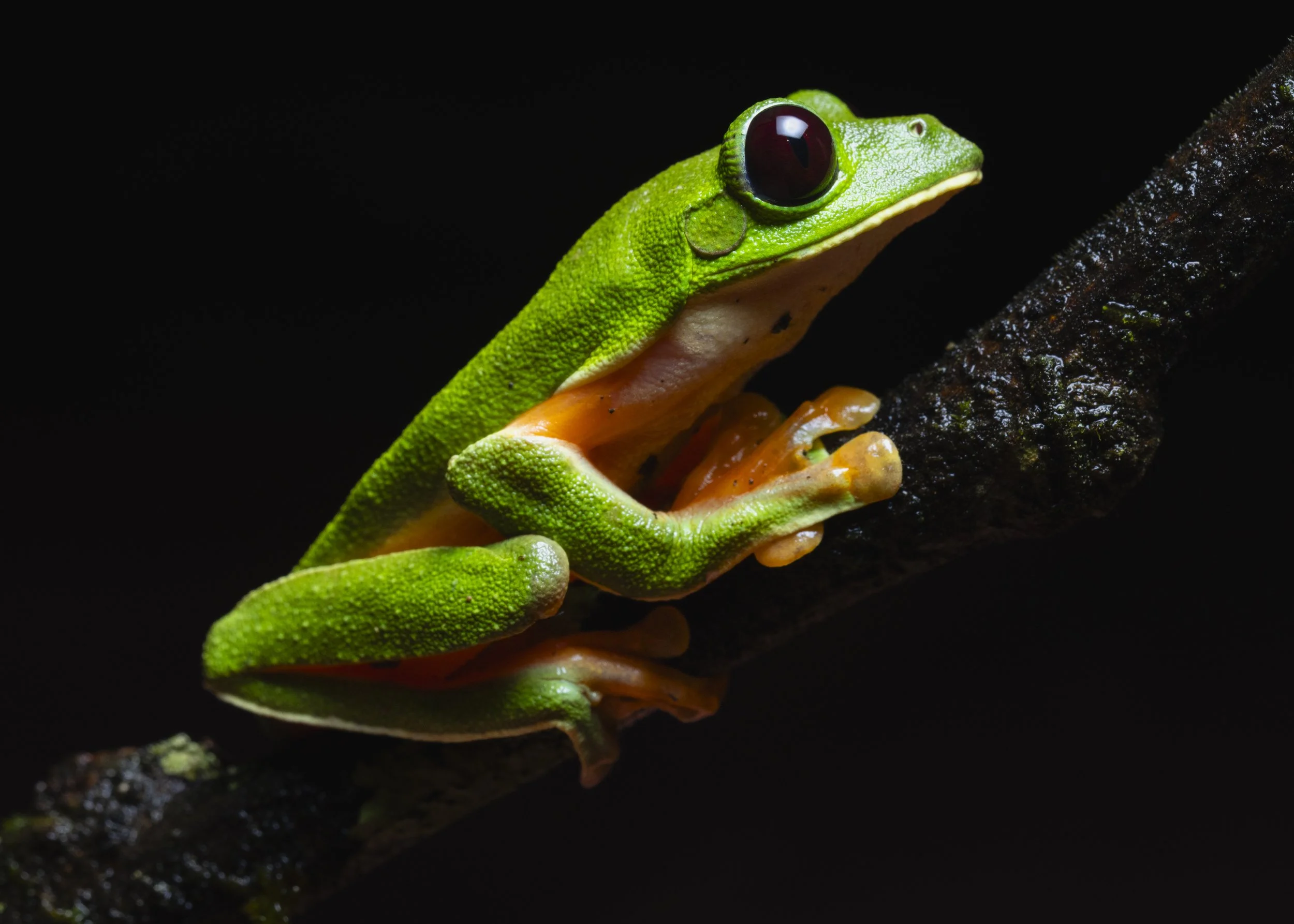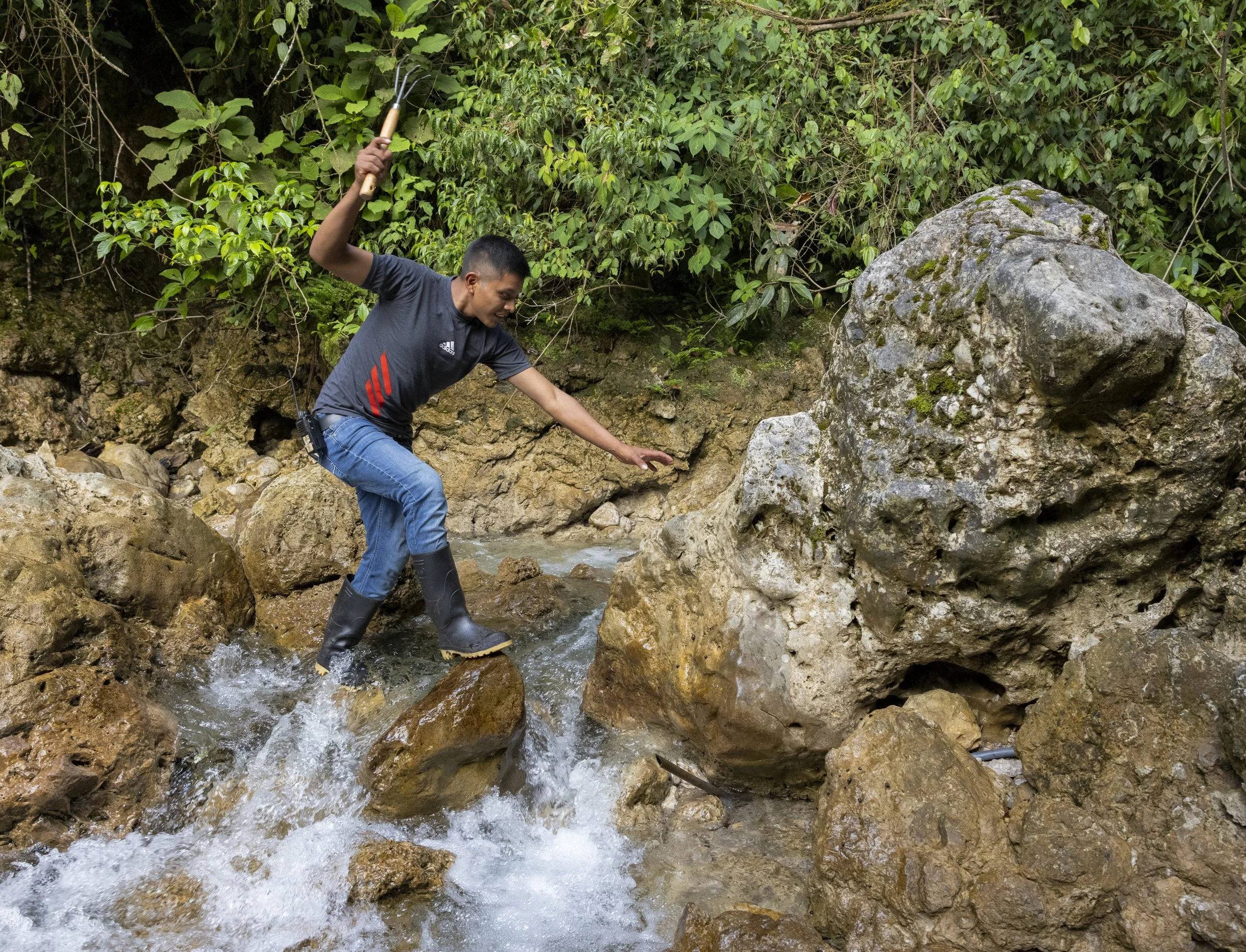
Yal Unin Yul Witz Natural Reserve
The Yal Unin Yul Witz Natural Reserve in Huehuetenango, Guatemala, is recognized as an area of global conservation importance, home to a remarkable diversity of endemic and critically endangered amphibians. The reserve protects species restricted to single remaining sites, making it essential for preventing extinctions. The reserve is covered by tropical mountain cloud forests, high-elevation forests found across the tropics and some subtropical regions.
At the heart of the conservation work are the rangers and administrators, including Sindy, Caño, Francisco, Sinthia, Santos, and Carmelino, who, together with the NGO FUNDAECO, dedicate themselves to monitoring and protecting these species in the field. Their work includes surveying habitats, patrolling and protecting the reserve, maintaining the station, and even producing coffee, but above all, ensuring the integrity of the forest under challenging conditions in remote areas. Over 60% of montane tropical forests in northern Huehuetenango have been lost in the last thirty years, making the rangers’ efforts crucial. Through their daily commitment, the team helps safeguard the eleven globally threatened amphibian species that depend on the reserve.

Yal Unin Yul Witz Natural Reserve
The Yal Unin Yul Witz Natural Reserve in Huehuetenango, Guatemala, is recognized as an area of global conservation importance, home to a remarkable diversity of endemic and critically endangered amphibians. The reserve protects species restricted to single remaining sites, making it essential for preventing extinctions. The reserve is covered by tropical mountain cloud forests, high-elevation forests found across the tropics and some subtropical regions.
At the heart of the conservation work are the rangers and administrators, including Sindy, Caño, Francisco, Sinthia, Santos, and Carmelino, who, together with the NGO FUNDAECO, dedicate themselves to monitoring and protecting these species in the field. Their work includes surveying habitats, patrolling and protecting the reserve, maintaining the station, and even producing coffee, but above all, ensuring the integrity of the forest under challenging conditions in remote areas. Over 60% of montane tropical forests in northern Huehuetenango have been lost in the last thirty years, making the rangers’ efforts crucial. Through their daily commitment, the team helps safeguard the eleven globally threatened amphibian species that depend on the reserve.
-

Francisco Felipe Juan
Francisco has been working at Yal Unin Yul Witz Reserve for two years. He is responsible for tasks such as patrolling and monitoring the forest, keeping track of the quetzal population, maintaining trails, and caring for the reserve’s coffee plots.
-

Francisco Felipe Juan
Francisco has been working at Yal Unin Yul Witz Reserve for two years. He is responsible for tasks such as patrolling and monitoring the forest, tracking the quetzal population, maintaining trails, and caring for the reserve’s coffee plots.
Endemic to Guatemala’s cloud forests, Hartweg's Spikethumb Frog (Plectrohyla hartwegi) is listed as Endangered on the IUCN Red List (International Union for Conservation of Nature), and faces threats from habitat loss and disease. In the Yal Unin Reserve, rangers protect the remaining forest and safeguard the streams where this rare frog still breeds, ensuring its fragile habitat endures amid increasing pressure from deforestation.
Endemic to Guatemala’s cloud forests, Hartweg's Spikethumb Frog (Plectrohyla hartwegi) is listed as Endangered on the IUCN Red List (International Union for Conservation of Nature), facing threats from habitat loss and disease. In the Yal Unin Reserve, rangers protect the remaining forest and safeguard the streams where this rare frog still breeds, ensuring its fragile habitat endures amid growing pressure from deforestation.
Every day in the forest, rangers rely on tools like GPS units, binoculars, machetes, camera traps, field guides, rakes, and snake hooks to navigate the terrain, track wildlife, and safeguard the reserve.
Snail Eater Snake (Sibon dimidiatus). This species plays an important ecological role in forest ecosystems and highlights the value of monitoring local fauna.
Rangers maintain the system that collects water from mountain streams for the reserve and nearby communities.
Francisco comes from a community near the reserve, and his role is to protect the forest that provides vital resources and ecosystem services for his community and beyond.
Every day in the forest, rangers rely on tools like GPS units, binoculars, machetes, camera traps, field guides, rakes, and snake hooks to navigate the terrain, track wildlife, and safeguard the reserve.
Snail Eater Snake (Sibon dimidiatus). This species plays an important ecological role in forest ecosystems and highlights the value of monitoring local fauna.
Rangers maintain the system that collects water from mountain streams for the reserve and nearby communities.
Francisco comes from a community near the reserve, and his role is to protect the forest that provides vital resources and ecosystem services for his community and beyond.
“We take care of the trails and the coffee plots, and when biologists come, we go out with them to monitor birds and any amphibians we find”
— Santos Gregorio Matías
Two Black-eyed Tree Frogs (Agalychnis moreletii) were found in the water tank near the station cabins, using it as a nocturnal refuge. Caño and Sindy observe the male resting in the tank’s pipe, while the female clings to the tank wall, illustrating how species adapt to the environments shaped by humans.
The black-eyed frog (Agalychnis moreletii), although classified as Least Concern by the IUCN, faces declining populations and persistent threats such as chytridiomycosis, habitat fragmentation and illegal trade, making it a symbol of environmental fragility, like all amphibians."
“Thanks to the conservation activities carried out by the colleagues (rangers) together with the technical team, the area has been fully protected and conservation initiatives have been promoted in the surrounding communities. Thanks to this intervention, the communities have made some changes in production, crop management, and the conservation of their natural resources.”
— Sindy Ramona Silvestre


FUNDAECO has recently started a project using camera traps to monitor wildlife in the reserve. These are motion-activated cameras that capture photos and videos whenever animals pass by, making it possible to see species that are rarely spotted by people. The rangers lead the project, carrying the cameras deep into the forest, setting them up in hidden spots, changing batteries and memory cards, and checking the images. These recordings allow them to identify new species, mainly mammals, that have not been recorded in the reserve before.
FUNDAECO has recently started a project using camera traps to monitor wildlife in the reserve. These are motion-activated cameras that capture photos and videos whenever animals pass by, making it possible to see species that are rarely spotted by people. The rangers lead the project, carrying the cameras deep into the forest, setting them up in hidden spots, changing batteries and memory cards, and checking the images. These recordings allow them to identify new species, mainly mammals, that have not been recorded in the reserve before.




